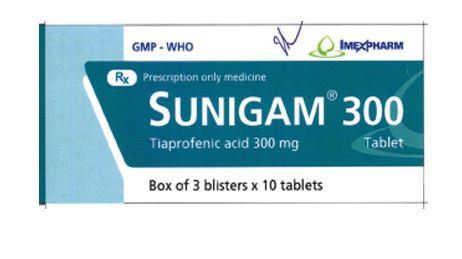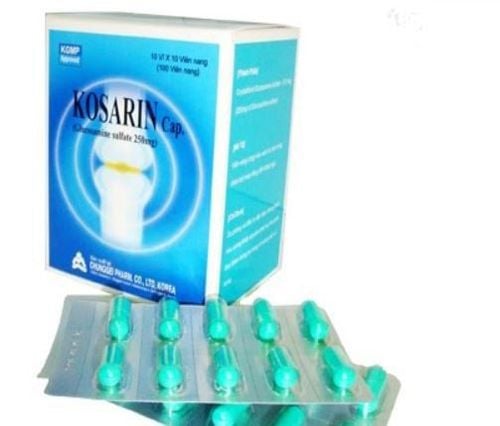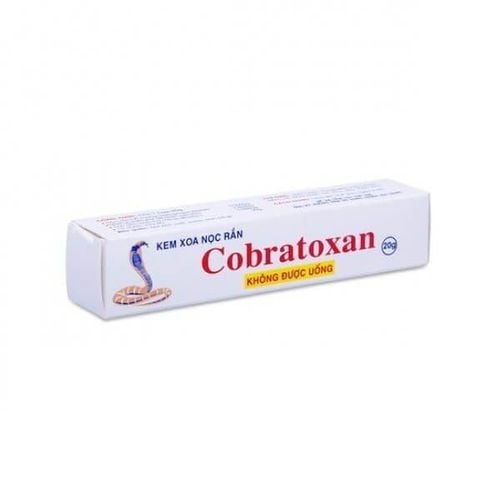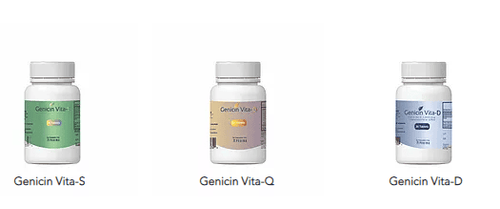This is an automatically translated article.
Cophamlox is a drug used quite commonly in pain relief, antipyretic, anti-inflammatory. However, many people are still very confused and do not fully understand the ingredients, uses or important notes when using this drug.1. What is Cophamlox?
Cophamlox is a drug manufactured and distributed by Armephaco Joint Stock Company Branch - Pharmaceutical Factory 150 - VIETNAM, with the main effects of pain relief, antipyretic and anti-inflammatory.Drug name: Cophamlox. Ingredients: Active ingredient Meloxicam 7.5mg and excipients just enough. Dosage form: Tablets. Packing: Includes box of 10 aluminum/aluminum blisters x 10 tablets, box of 10 aluminum/PVC blisters x 10 tablets and bottles of 100 tablets, bottles of 200 tablets. Expiry date: 30 months. Manufacturing company: Branch of Armephaco Joint Stock Company - Pharmaceutical Factory 150 - VIETNAM. Registrant Company: Branch of Armephaco Joint Stock Company - Pharmaceutical Factory 150 - VIETNAM.
2. What does Cophamlox do?
2.1. Cophamlox Meloxicam is a non-steroidal anti-inflammatory drug that is also a derivative of oxicam, so that it is highly effective in anti-inflammatory, antipyretic, analgesic. Its general mechanism of action is based on inhibition of the biosynthesis of prostaglandins - chemical mediators responsible for inflammation, fever, and pain.
The drug is well absorbed from the gastrointestinal tract, according to oral bioavailability studies reaching 89% compared to intravenous administration. Food also has little effect on the absorption of drugs.
2.2. Indication of the drug Cophamlox Subjects assigned to use Cophamlox include:
People who need to be treated for arthritis;
Symptomatic treatment of short-term osteoarthritis diseases;
Ankylosing spondylitis.
Long-term treatment for degenerative joint disease and other chronic joint diseases.
2.3. Contraindications to the drug Cophamlox Some of the following cases are contraindicated to use Cophamlox:
Patients with allergies or hypersensitivity to Meloxicam or other non-steroidal anti-inflammatory drugs. Do not use the drug in patients who have experienced signs of angioedema, asthma, nasal polyps or urticaria after taking other non-steroidal anti-inflammatory drugs or aspirin. Do not use in patients with advanced peptic ulcer, bleeding disorder or severe liver failure not on dialysis. Do not use for children under 15 years old, women who are pregnant or breastfeeding. In addition, patients should note that people who are sensitive or allergic to any ingredient of the drug should not use the drug. Other cases need to be used as directed by the doctor or prescribed in the drug instruction sheet. Contraindications for Cophamlox must be absolutely contraindicated, not for any reason that can be flexible in taking the drug.
3. Dosage and how to use Cophamlox
3.1. Dosage of the drug Cophamlox Cophamlox drug is used orally with the dosage for each specific case as follows:
Rheumatoid arthritis: Use with the usual dose of 2 tablets / day, taken only once a day. Acute exacerbation of osteoarthritis: Use 1 tablet / day, if necessary, the dose can be increased to 2 tablets / day, taken only once a day. Ankylosing spondylitis: Use with the usual dose of 2 tablets / day, if used for a long time for the elderly, the dose should be 1 tablet / day. Liver failure, renal failure: In case of mild and moderate disease, no dose adjustment is required, if severe, do not use. Patients with renal failure requiring dialysis: Do not take more than 1 tablet per day. Children under 18 years old: There is no specific dose, so only use as directed by a doctor. Patients need to apply the correct dosage of the drug as stated in the instruction sheet or as directed by the pharmacist or doctor. Absolutely do not arbitrarily apply, calculate or change the dose.
3.2. Handling when missed dose, overdose Cophamlox Overdose
When using the drug in excess of the prescribed dose, the patient should stop taking and immediately notify the doctor, pharmacist for appropriate handling. At the same time, closely monitor unusual manifestations to avoid dangerous situations.
Missed dose
Usually, the medicine can be taken within 1-2 hours of what is stated in the prescription. Except for cases with strict requirements on the time of use, it can be taken after a few hours when remembering. However, when it is remembered that it is almost time for the next dose, the patient should skip the missed dose and take the next dose as scheduled, do not take a double dose to make up for it, because of the risk of harming the body. body.
4. Note when using Cophamlox drug
4.1. Cophamlox side effects During the use of Cophamlox, patients may experience some of the following side effects:
Common: Nausea, vomiting, indigestion, flatulence, constipation, diarrhea, itching, rash, anemia, dizziness, headache, edema. Uncommon: heartburn, stomatitis, peptic ulcer, esophagitis, gastrointestinal bleeding, urticaria, possible onset of acute asthma, hypertension, facial flushing, palpitations, dizziness, tinnitus. Rare: Proctitis, gastric perforation, becoming sensitive to light. Usually, these side effects go away after the patient stops taking the drug. If you experience a rare side effect not mentioned above or suspect a side effect of the drug, the patient should immediately notify the doctor or healthcare professional.
4.2. Cophamlox should be used with caution in the following cases:
The patient has a history of upper gastrointestinal disease, is being treated with anticoagulants and has adverse skin reactions. Patients at risk of decreased renal blood flow and blood volume such as cirrhosis, heart failure, severe kidney disease, nephrotic syndrome, undergoing major surgery or taking diuretics, should have their kidney function checked. and urine volume prior to administration. Driving vehicles, operating machinery while taking the drug can cause dizziness, lightheadedness, drowsiness. 4.3. Drug Interactions Concomitant use with other nonsteroidal anti-inflammatory drugs at high doses may increase the risk of peptic ulcer and bleeding. Concomitant use with oral anticoagulants that can dissolve blood clots (ticlopidine, heparin), increases the risk of bleeding. Concomitant use with lithium increases plasma lithium concentrations. Co-administration with methotrexate increases hematopoietic toxicity. Taking the pill while the IUD is in place will decrease the effectiveness of the contraceptive. Concomitant use of diuretics increases the likelihood of acute renal failure in dehydrated patients. Should not be used with antihypertensive drugs such as diuretics, ACE inhibitors, blockers, vasodilators because they can reduce the antihypertensive effect. Cholestyramine binding in the gastrointestinal tract increases the elimination of meloxicam. Co-administration with meloxicam increases the nephrotoxicity of cyclosporin. Concomitant use with Warfarin will increase the bleeding process. Concomitant use with furosemide and thiazides will reduce the diuretic effect of these drugs. In addition, the use of the drug should be considered in conjunction with tobacco, alcohol, alcoholic beverages or fermented foods. Because the above agents can change the composition of the drug.
Above is important information about the use of Cophamlox as well as its ingredients, usage and important notes that you need to remember clearly. To ensure safety and effectiveness, patients should carefully read the instructions for use or consult a doctor or medical staff.
Please dial HOTLINE for more information or register for an appointment HERE. Download MyVinmec app to make appointments faster and to manage your bookings easily.













